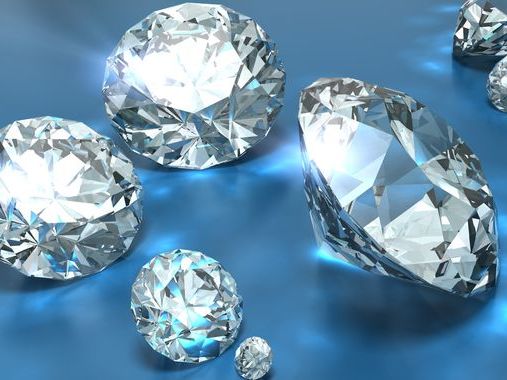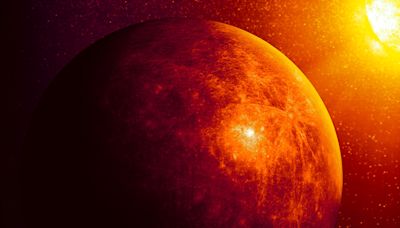Search results
An old [10] pound coin (density ~7.6 g/cm 3) floats on mercury due to the combination of the buoyant force and surface tension. Mercury is a heavy, silvery-white metal that is liquid at room temperature. Compared to other metals, it is a poor conductor of heat, but a fair conductor of electricity.
Mercury is the first planet from the Sun and the smallest in the Solar System. In English, it is named after the ancient Roman god Mercurius , god of commerce and communication, and the messenger of the gods. Mercury is classified as a terrestrial planet, with roughly the same surface gravity as Mars.
Mercury is the smallest planet in our solar system and the nearest to the Sun. Mercury is only slightly larger than Earth's Moon. Its surface is covered in tens of thousands of impact craters.
6 days ago · Mercury is the smallest planet in the solar system, and it is also the planet closest to the Sun, making it the most difficult of the planets to see with the unaided eye. Because its rising or setting is always within about two hours of the Sun’s, Mercury is never observable when the sky is fully dark.
Dana Bolles. Introduction Mercury’s surface temperatures are both extremely hot and cold. Because the planet is so close to the Sun, day temperatures can reach highs of 800°F (430°C). Without an atmosphere to retain that heat at night, temperatures can dip as low as -290°F (-180°C).
Jul 12, 2024 · Mercury, chemical element, liquid metal of Group 12 of the periodic table. Mercury is the only elemental metal that is liquid at room temperature. Mercury is silvery white and slowly tarnishes in moist air. It alloys with copper, tin, and zinc to form amalgams, or liquid alloys.
Jul 9, 2024 · Instead of an atmosphere, Mercury possesses a thin exosphere made up of atoms blasted off the surface by the solar wind and striking meteoroids. Mercury's exosphere is composed mostly of oxygen, sodium, hydrogen, helium, and potassium. Mercury doesn’t have any moons. Explore Mercury!
Oct 19, 2018 · Mercury is also the smallest planet in the solar system, measuring just 3,032 miles wide at its equator. That makes it only slightly larger than Earth’s moon.
2 days ago · Using data from NASA 's MESSENGER spacecraft, scientists have determined that a 10-mile-thick diamond mantle may lie beneath the crust of Mercury, the closest planet to the sun. Mercury has long ...
Mercury is the smallest planet in the Solar System. One of five planets visible with the naked eye a, Mercury is just 4,879 Kilometres across its equator, compared with 12,742 Kilometres for the Earth. Mercury is the second densest planet. Even though the planet is small, Mercury is very dense.





